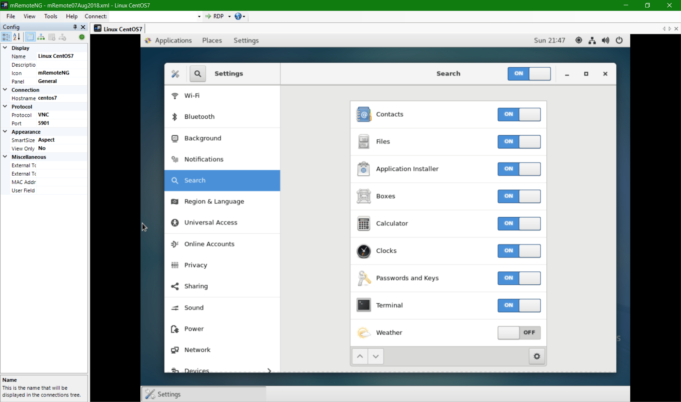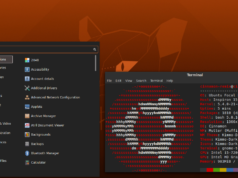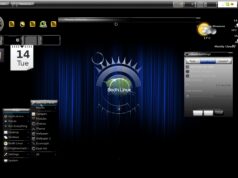Remote Desktop Login
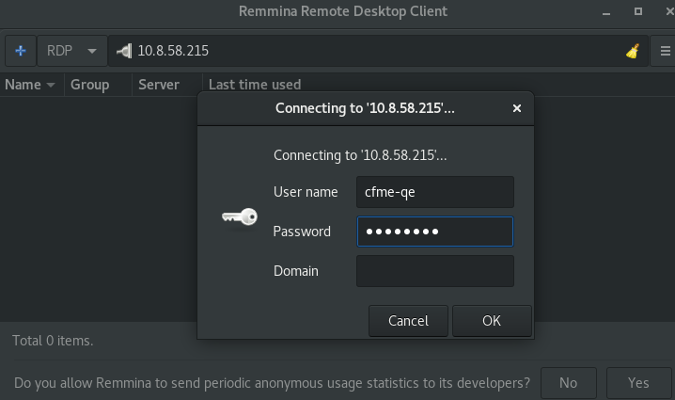
A well known concept in the web scenario. Infact most of the tech world depends on this. Remote Desktop simply means that you can control the other fellows system from your desktop (with his permission!). All we need is information such as its IP address and the password of the remote machine. We might need to remotely access other’s machine either in case of work or for fun (hackers!!!)
Coming to the work part let’s consider the following scenario:
I got a netbook with me. It’s quite good for carrying around and browsing webpages. But when I need to download big stuff like a new Ubuntu distro then it does not fit. So I solved this problem through the concept of remote control. I got a desktop at my home running 24 hours a day and connected to the Web too all the time. So whenever I need to download the stuff , which I find through my netbook, I remotely login to the desktop through my netbook and start the download on it. This way when the download starts my work is done. By this scenario you might have understand the concept of remote login.
There are lots of methods through which we can remotely login to another system. In this article we will look on the top 3 methods used in Ubuntu for remote login.
Remote Desktop Viewer
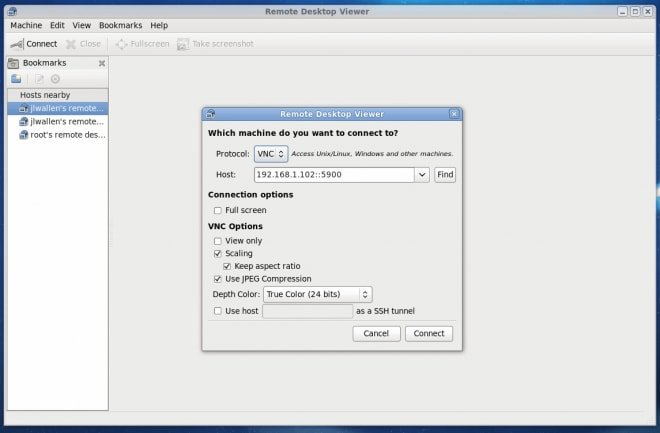
It is the easiest way to remotely login into someone’s system. Follow the following path and you will get a screenshot shown below . Path is Applications -> Internet -> Remote Desktop Viewer
Click on the connect button appearing on your top left hand side and you will get a dialog box. Enter the remote machine’s IP address over there. Then it will ask you for the password ( If set on the remote machine) After entering the password you can now control the remote machine and can play with it fully.
To allows other machines to access your machine you need to set up the remote desktop environment. Go to the System -> Prefrences -> Remote Desktop. You will see a screenshot like below. Configure it according to your need and give the person your IP and password . In this way he can remotely access your machine 
Team Viewer
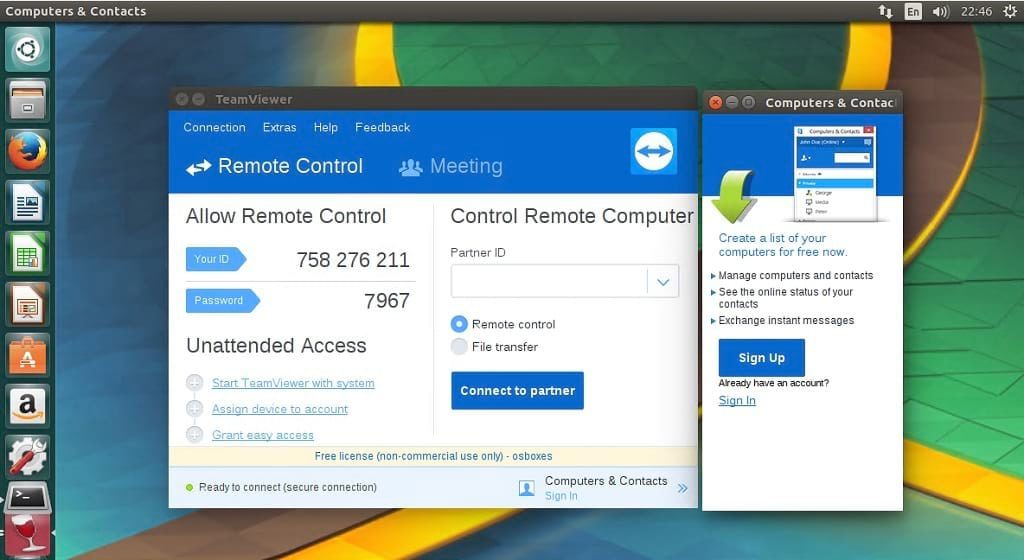
It is a well know software for setting up a remote desktop environment. Initially It was launched only for Windows but due to the increasing demand of Linux users they opened up support for Linux also.
The primary requirement of this software is that both the machines must have Teamviewer installed on it. Teamviewer is also available in ubuntu’s repository . You can install it by typing “sudo apt-get install teamviewer6” on the terminal . After installing it go to Applications -> Internet -> Teamviewer 6 . You will see a screenshot like below on opening :
As you can see there are two options over there. Create a session or connect to the partner. Create the Id and Password if you want your partner to access your machine. Then handover the details to him. He will enter it in the other box and all done . You can access his machine in the same way 
Vncviewer
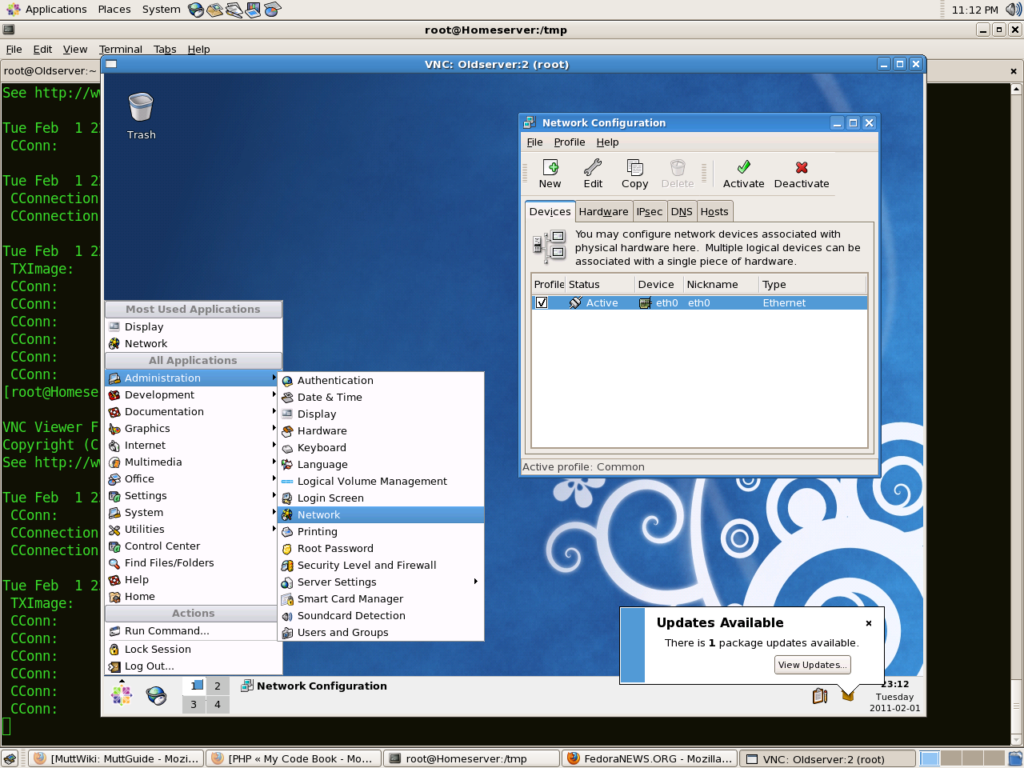
Most of the remote desktop process are carried out using the VNC protocol. You can also see in the first image that we are using the vnc protocol over there too. There the VNC protocol is embedded into the Ubuntu GUI.
The good thing of the VNC protocol is that you can connect to windows and other operating systems too. We can also connect to the remote machine using the direct “vncviewer” tool from the CLI. This comes pre installed in most the distro’s and Ubuntu is no exception. Type “vnc ipaddress” in the terminal in ubuntu. It will open the port number 5900 (generally used by vnc protocol) and you will see something like below on your screen. Just enter the password and again you are into the remote system.
I realised that life with remote desktop is much easier 

